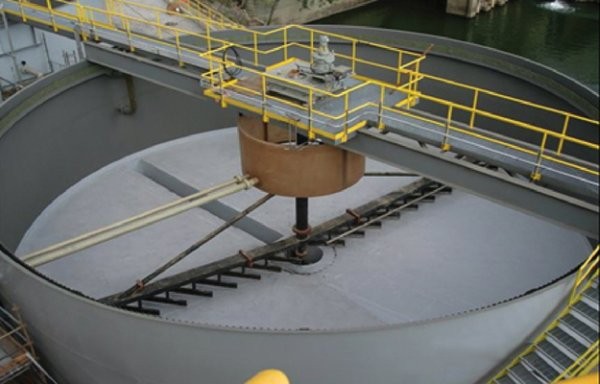Bridging gaps in water and wastewater containment

Water and wastewater treatment facilities are exposed to hazardous and costly leaks, unless containment vessels have linings that will “bridge” structural cracks and resist harsh chemicals.
Although water and wastewater treatment vessels are engineered to be foolproof, the eventual leakage of these vessels due to mechanical or chemical influences can pose a serious threat to the health and safety of workers, the public and the environment they are supposed to protect. In addition to those hazards, leaking containment systems also result in unplanned downtime and diminished capacities accompanied by time-consuming, expensive and recurring repairs.
As safe as they may be initially, the ongoing integrity of many water and wastewater containment structures depends on the abilities of the containment system linings – often consisting of coatings – to provide the thorough protection against leakage over time.
There are several choices of products that are designed to protect against leaking or spilling of the aqueous materials contained by primary and secondary containment structures. Yet many of the most popular products – polyurea, polyurethane, polysulphide, silicone and epoxy –offer only limited protection, and will fail due to a variety of chemical and mechanical challenges.
There are numerous chemical challenges to primary containment vessels that are not sufficiently addressed by the above products. Those challenges are due to the wide array of chemicals that are found in industrial water and wastewater treatment operations.
These include hydrogen sulphide, sodium hydroxide, sulphuric acid, sodium hypochlorite and chlorine, as well as numerous other industry-specific and harsh chemicals such as nitric or hydrofluoric acids. Such chemicals attack both steel and concrete in process or storage tanks, clarifiers, thickeners, cooling towers with concrete bottoms, and concrete tanks, and the concrete bottoms in steel-walled clarifiers and thickeners.
Mechanical issues include abrasion or erosion of primary containment linings via solid contaminants, and cracking of concrete substrates used for primary containment vessels (e.g. the bottoms of clarifiers). On steel substrates, linings often lack high permeation resistance, which will cause the linings topcoat to display blisters. These blisters are symptoms that linings are failing due to molecular vapour transmission through the lining on a steel or concrete substrate.
While secondary containment dikes are required to enclose leaks and spills for three days, (72 hours), damage to the lining is likely from the spill of most chemicals resulting compromising the dike’s integrity, resulting in costly and time-consuming maintenance and downtime. UV rays and weather cause concrete to move and crack, also, and just plain degrade most polymers, causing the same problems.
The Elasti-Liner system from KCC is a line of engineered elastomeric lining products that is applied by brush or roller to concrete substrates and directly over expansion and control joints.
To have a polymer lining that cracks in containment dikes, is no containment at all, and it is misleading to even call it a containment lining if that so-called containment lining cracks when the concrete cracks.
The engineered elastomeric lining is noteworthy for its long service life, ability to “bridge” joints and cracks in concrete, imperviousness to UV light and harsh chemicals, and ease of installation.
As an end user customer put it, “You know that concrete cracks. And you know that hazardous materials, if spilled, will leak into the ground and contaminate ground water. Therefore you know you cannot use a coating or lining that cracks”
Soil remediation is extremely expensive, but is normally unwarranted if you use a crack-bridging elastomeric lining. Plus, the crack-bridging property does not affect, in any way, chemical resistance of the lining. If the lining is resistant to the intended chemicals then it will also bridge moving concrete cracks to 1/8-inch and larger.
“I would say that this Elasti-Liner product line is the only truly monolithic containment liner available,” says Art Rak, president of Ultimate Corrosion Control.
One of the main benefits in using this elastomeric lining on containment and other concrete structures is that concrete joints are simply taken care of by the lining overlaying the joint, so joint problems are completely eliminated.
Rak says this elastomeric product line is great at bridging cracks up to one-eigth inch because of the way it is engineered. The polymers are cross-linked and act like coiled springs that expand and also contract as concrete moves.
“The elastomeric liner exceeds the tensile strength of concrete,” he says. “If you deliberately tried to pull the liner off the concrete, you would have to exceed 500 psi in pulling strength. So, this elastomeric-based lining is so well bonded to concrete no matter what the concrete does.”
Because you can apply Elasti-Liner over expansion and control joints in concrete structures, considerable installation time and costs are saved.

